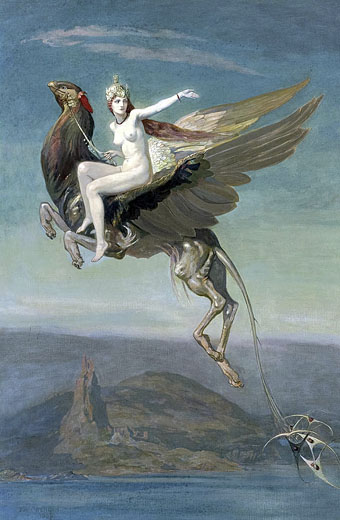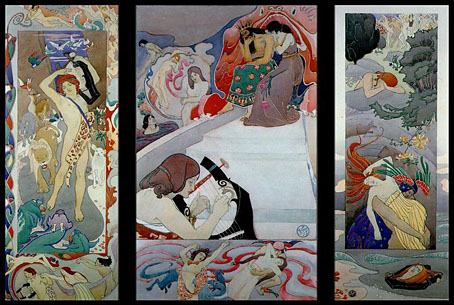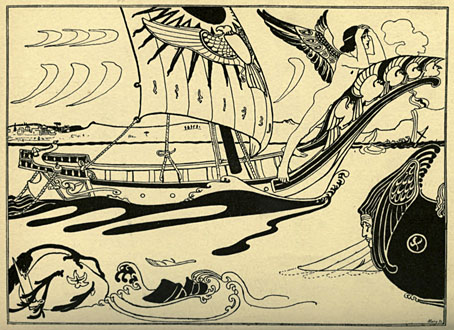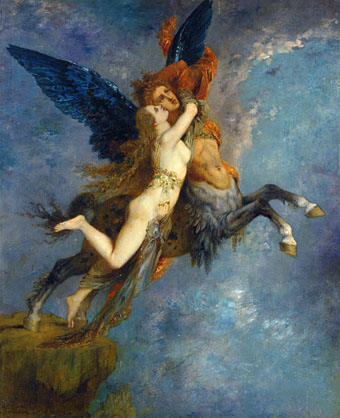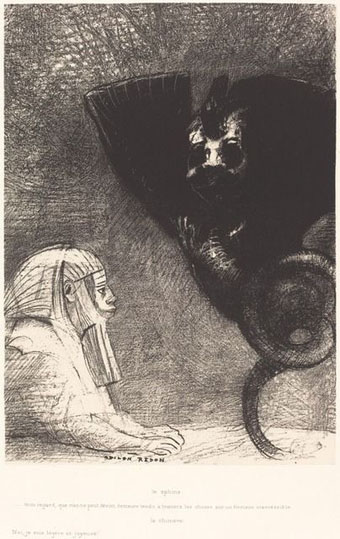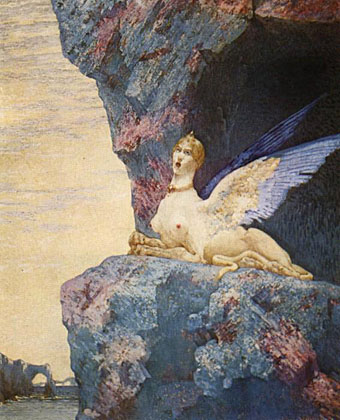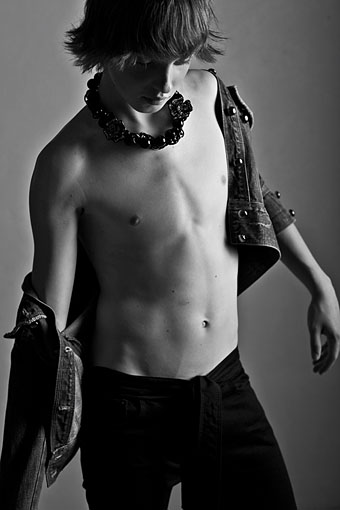Heptu Bidding Farewell to the City of Obb (1909). Another of those paintings that provide a link between 19th-century art and 20th-century fantasy illustration.
Scotland isn’t a nation commonly associated with Symbolist painting, or with what The Studio magazine called “mystic subjects” when writing about John Duncan’s painting of Heptu on her hippogriff. There were a handful of Scottish artists in the late 1800s whose work suits the description, mostly the members of the Glasgow School, although some of these would be considered marginal cases compared to their Continental contemporaries. In the Anglophone countries Symbolist art is so thin on the ground that Michael Gibson in Symbolism (1995) puts Great Britain and the United States into a single chapter, and even there many of the artists he highlights—people such as Thomas Cole and the Pre-Raphaelites—are more like precursors, being too early to be considered an active part of a movement that only established itself in the 1880s.
The Legend of Orpheus (1895).
John Duncan does fit the bill, however, more so than I would have expected until I started looking at his paintings. Duncan’s career oscillated between Dundee and Edinburgh so he avoided the Arts and Crafts tendencies of the Glasgow School. His work is closer to French artists like Alexandre Séon, especially in the sculptural treatment of his figures. Familiar subjects and motifs abound: the riddle of the Sphinx, peacocks, Wagner, sorcery, and a variety of myths and legends, from Scotland to ancient Greece. The ink drawings here are from The Evergreen, A Northern Seasonal, a small art and literature magazine published in Edinburgh that managed four issues from 1895 to 1896. In Duncan’s later work he avoided the upheavals of Modernism by keeping to safe religious subjects. If the date is accurate for that Sphinx it must have seemed very old-fashioned in 1934.
Out-Faring (1895).
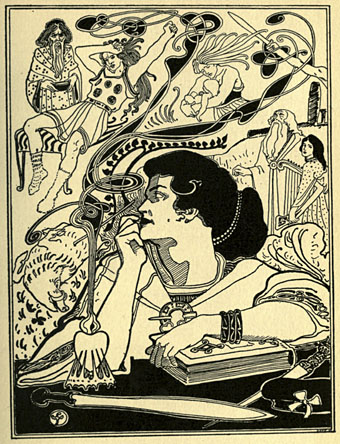
Anima Celtica (1895).
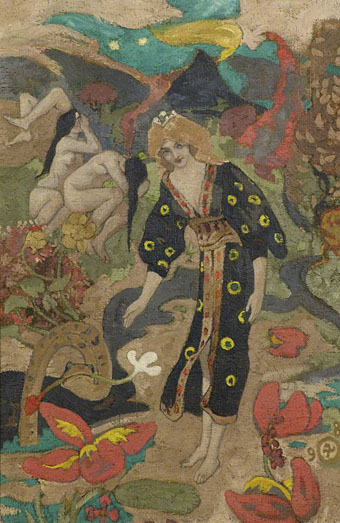
A Sorceress (1898).

